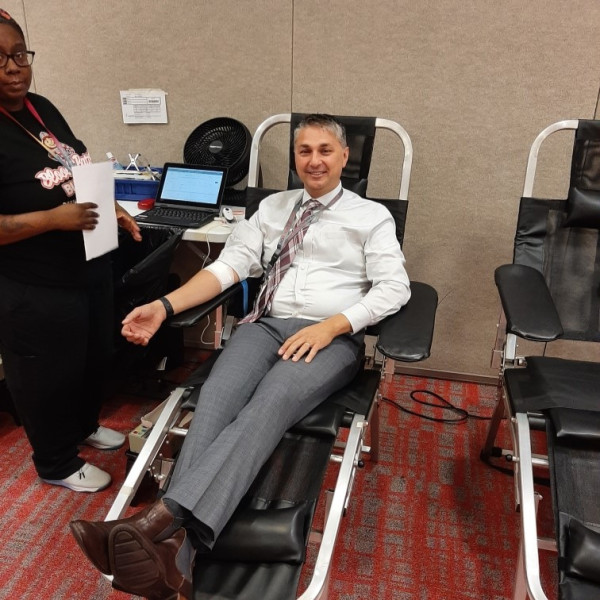Blood
Ohio State defends title in 42nd annual Blood Battle
Naeem Ali has some comforting words for people who are afraid of giving blood: You’re not alone.
Ali, who is serving as the spokesperson in the 42nd annual Blood Battle between The Ohio State University and the University of Michigan, doesn’t enjoy having his blood taken, he said. But he reminds himself that the people who do that work are the best ones for it.
“Imagine who’s the best at doing it,” said Ali, medical director of University Hospital, physician and clinical professor of internal medicine. “The people that do it every day, multiple times a day. … I haven’t met a person in a blood drive who isn’t an expert at what they do.”
The battle began on Oct. 25 and will end on Nov. 22. Forty-eight blood drives are being held across the university’s campus. The winner will receive the Blood Battle trophy during halftime on Nov. 25, when the Buckeyes face the Wolverines on the football field. Ohio State topped Michigan in donations last year and is looking to do it again.
“Healthy competition is a great way [to raise awareness about the need for blood products],” Ali said. “It’s an opportunity to say, ‘Hey, let’s take something we love to rally around – our love for the university, our love for the Buckeyes and our love of sports – and visit a blood donation site around the university.’”
In addition to his work as a physician, Ali plays an administrative role in the university’s blood supply. As medical director of University Hospital, he works with an interdepartmental team to monitor blood supply levels.
“It was an easy step when I was asked to be the spokesperson for this year’s Blood Battle. I said, ‘Sign me up’ because I live it every day.”
Donations don’t take long: People are usually finished in an hour. Each donation can save as many as three lives, which are most likely in the Columbus community.
“[The donations] will most likely be used locally because it’s a resource that has to be handled carefully,” Ali said. “It’s not like a monetary donation to a national organization. You know when you’re doing it that it’s going to be used in the supply chain in your area. You really are giving back to the patients that we’re caring for here.”
Blood transfusions are routinely used for both long-term and immediate care. Around 1 in 7 people in the hospital require them, Ali said.
In emergency situations, timely access to blood can make a significant difference in a patient’s recovery.
“There’s something called ‘the golden hour’ of resuscitation in trauma injuries,” Ali said. “You have to do as much as you can within the first hour of something like a car accident. If you’re delayed because you don’t have resources like blood, the outcomes of those patients get worse with each hour lost.”
When people are hospitalized for longer periods of time, they often need blood transfusions to support their healing.
“Sometimes patients who are critically ill, their metabolism has shifted so much as they’re trying to heal that they don’t produce as much blood as they normally would,” Ali said. “Their blood counts start to drift down so we need to provide them that help.”
Helping people understand a hospital’s many needs for blood is part of his role as spokesperson, Ali said. Another is emphasizing blood donations can be part of a person’s routine. He donates several times a year. Following established guidelines, a person can donate as often as every 56 days, he said.
“How do you communicate that to folks? You tell people how easy it is to give blood,” Ali said. “It’s quick, it’s simple. You can be done in under an hour. And it’s impactful.”
For information about where to donate, visit Versiti’s website: https://versiti.org/ways-to-give/annual-blood-drives/ohio-state-vs-michigan-blood-battle.

